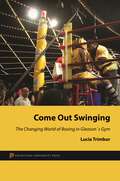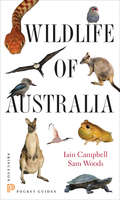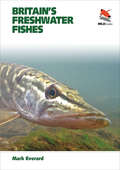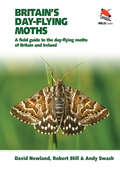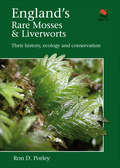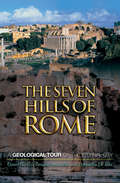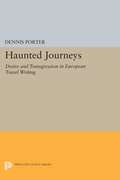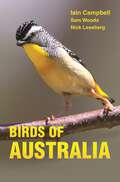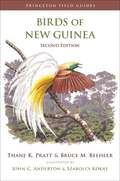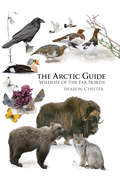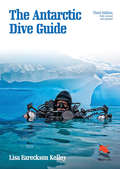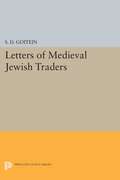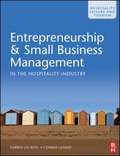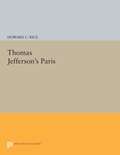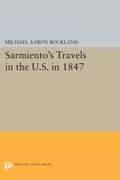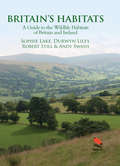- Table View
- List View
Come Out Swinging: The Changing World of Boxing in Gleason's Gym (PDF)
by Lucia TrimburGleason's Gym is the last remaining institution of New York's Golden Age of boxing. Jake LaMotta, Muhammad Ali, Hector Camacho, Mike Tyson--the alumni of Gleason's are a roster of boxing greats. Founded in the Bronx in 1937, Gleason's moved in the mid-1980s to what has since become one of New York's wealthiest residential areas--Brooklyn's DUMBO. Gleason's has also transformed, opening its doors to new members, particularly women and white-collar men. Come Out Swinging is Lucia Trimbur's nuanced insider's account of a place that was once the domain of poor and working-class men of color but is now shared by rich and poor, male and female, black and white, and young and old. Come Out Swinging chronicles the everyday world of the gym. Its diverse members train, fight, talk, and socialize together. We meet amateurs for whom boxing is a full-time, unpaid job. We get to know the trainers who act as their father figures and mentors. We are introduced to women who empower themselves physically and mentally. And we encounter the male urban professionals who pay handsomely to learn to box, and to access a form of masculinity missing from their office-bound lives. Ultimately, Come Out Swinging reveals how Gleason's meets the needs of a variety of people who, despite their differences, are connected through discipline and sport.
Wildlife of Australia
by Iain Campbell Sam WoodsIdeal for the nature-loving traveler, Wildlife of Australia is a handy photographic pocket guide to the most widely seen birds, mammals, reptiles, amphibians, and habitats of Australia. The guide features more than 400 stunning color photographs, and coverage includes 350 birds, 70 mammals, 30 reptiles, and 16 frogs likely to be encountered in Australia's major tourist destinations. Accessible species accounts are useful for both general travelers and serious naturalists, and the invaluable habitat section describes the Australian bush and its specific wildlife. Animal species with similar features are placed on the same plates in order to aid identification. Wildlife of Australia is an indispensable and thorough resource for any nature enthusiast interested in this remarkable continent. Easy-to-use pocket guide More than 400 high-quality photographs Accessible text aids identification Habitat guide describes the Australian bush and its specific wildlife Coverage includes the 350 birds, 70 mammals, 30 reptiles, and 16 frogs most likely to be seen on a trip around Australia
Mammals of China
by Andrew T. Smith Yan XieChina's breathtaking diversity of natural habitats--from mountains and deserts to grasslands and lush tropical forests--is home to more than 10 percent of the world's mammal species. This one-of-a-kind pocket guide describes the characteristics, geographic distribution, natural history, and conservation status of all 558 species of mammals found in China. An up-to-date distribution map accompanies each species account, and beautiful color illustrations by wildlife artist Federico Gemma depict a majority of the species. The definitive text is written by leading specialists and follows the most current global standards for mammalian systematics. This field-ready pocket edition of A Guide to the Mammals of China makes the rich mammal fauna of China accessible to ecotravelers and naturalists like never before. The comprehensive pocket guide to all of China's 558 mammal species Describes the physical characteristics, geographic distribution, natural history, and conservation status of every species Features up-to-date distribution maps and stunning color illustrations throughout Written by a team of leading specialists
Britain’s Freshwater Fishes (PDF)
by Mark EverardBritain hosts a diversity of freshwater environments, from torrential hill streams and lowland rivers to lakes and reservoirs, ponds and canals, and ditches and estuaries. Britain's Freshwater Fishes covers more than 50 species of freshwater and brackish fish found in these waters. This beautifully illustrated guide features in-the-hand and in-the-water photographs throughout, and accessible and informative overviews of topics such as fish biology and life cycles. Detailed species accounts describe key identification features, with information on status, size and weight, habitat, ecology, and conservation. The book also includes a glossary and suggestions for further reading. This easy-to-use field guide will be invaluable to anyone interested in Britain's freshwater fish life, from naturalists and academics to students and anglers. Covers all of Britain's freshwater fishes Features beautiful photos throughout Includes detailed information on more than 50 species, the places they inhabit, and their roles in Britain's ecosystems Attractively designed and easy to use
Britain’s Day-flying Moths: A Field Guide to the Day-flying Moths of Britain and Ireland
by David Newland Robert Still Andy Swash Mark ParsonsThis concise photographic field guide will help you identify any of the 100 or so day-flying moths found in Britain and Ireland. Combining stunning photographs, authoritative text, and an easy-to-use design, this book makes a perfect traveling companion--one that will increase your enjoyment of these colorful and intriguing creatures. Like butterflies, some moths fly regularly in sunshine, whereas others that usually fly only at night are readily disturbed from their resting places during the day. This guide describes all of these species, with at least one photograph of each in its natural, resting pose. The text includes a brief description of each moth, with details of its life history, where and when to look for it, its status, the food plants of its caterpillars, and its special features. Introductory sections cover many topics, including how to distinguish moths from butterflies; classification; life cycle and behavior; ecological importance; the impact of habitat and climate change; recording and monitoring; and conservation. Individual accounts for some 100 species Stunning photographs of every moth, as you see them Attractive, easy-to-use, and accessible design
Britain’s Day-flying Moths: A Field Guide to the Day-flying Moths of Britain and Ireland (PDF)
by David Newland Robert Still Andy Swash Mark ParsonsThis concise photographic field guide will help you identify any of the 100 or so day-flying moths found in Britain and Ireland. Combining stunning photographs, authoritative text, and an easy-to-use design, this book makes a perfect traveling companion--one that will increase your enjoyment of these colorful and intriguing creatures. Like butterflies, some moths fly regularly in sunshine, whereas others that usually fly only at night are readily disturbed from their resting places during the day. This guide describes all of these species, with at least one photograph of each in its natural, resting pose. The text includes a brief description of each moth, with details of its life history, where and when to look for it, its status, the food plants of its caterpillars, and its special features. Introductory sections cover many topics, including how to distinguish moths from butterflies; classification; life cycle and behavior; ecological importance; the impact of habitat and climate change; recording and monitoring; and conservation. Individual accounts for some 100 species Stunning photographs of every moth, as you see them Attractive, easy-to-use, and accessible design
England’s Rare Mosses and Liverworts: Their History, Ecology, and Conservation
by Ron D. PorleyThis is the first book to cover England's rare and threatened mosses and liverworts, collectively known as bryophytes. As a group, they are the most ancient land plants and occupy a unique position in the colonization of the Earth by plant life. However, many are at risk from habitat loss, pollution, climate change, and other factors. Britain is one of the world's best bryologically recorded areas, yet its mosses and liverworts are not well known outside a small band of experts. This has meant that conservation action has tended to lag behind that of more charismatic groups such as birds and mammals. Of the 916 different types of bryophyte in England, 87 are on the British Red List and are regarded as threatened under the strict criteria of the International Union for the Conservation of Nature. This book aims to raise awareness by providing stunning photographs--many never before published--of each threatened species, as well as up-to-date profiles of 84 of them, including status, distribution, history, and conservation measures. The book looks at what bryophytes are, why they are important and useful, and what makes them rare; it also examines threats, extinctions, ex situ conservation techniques, legislation, and the impact of the 1992 Convention on Biological Diversity. Provides the first treatment of England's rare and threatened mosses and liverworts Features stunning photographs--many never before published--of each species and many of their habitats Treats each species in a handy and attractive double-page layout Includes up-to-date profiles of 84 species, including status, distribution, history, and conservation measures Presents the first overview of English bryophyte conservation Offers invaluable guidance to people working in conservation in England, the British Isles, Europe, and beyond
The Seven Hills of Rome: A Geological Tour of the Eternal City
by Grant Heiken Renato Funiciello Donatella De Rita Walter VeltroniFrom humble beginnings, Rome became perhaps the greatest intercontinental power in the world. Why did this historic city become so much more influential than its neighbor, nearby Latium, which was peopled by more or less the same stock? Over the years, historians, political analysts, and sociologists have discussed this question ad infinitum, without considering one underlying factor that led to the rise of Rome--the geology now hidden by the modern city. This book demonstrates the important link between the history of Rome and its geologic setting in a lively, fact-filled narrative sure to interest geology and history buffs and travelers alike. The authors point out that Rome possessed many geographic advantages over surrounding areas: proximity to a major river with access to the sea, plateaus for protection, nearby sources of building materials, and most significantly, clean drinking water from springs in the Apennines. Even the resiliency of Rome's architecture and the stability of life on its hills are underscored by the city's geologic framework. If carried along with a good city map, this book will expand the understanding of travelers who explore the eternal city's streets. Chapters are arranged geographically, based on each of the seven hills, the Tiber floodplain, ancient creeks that dissected the plateau, and ridges that rise above the right bank. As an added bonus, the last chapter consists of three field trips around the center of Rome, which can be enjoyed on foot or by using public transportation.
Haunted Journeys: Desire and Transgression in European Travel Writing
by Dennis PorterFocusing on travel journals by writers, navigators, philosophers, scientists, and anthropologists--from the eighteenth-century grand tour to the modern period--Dennis Porter explores how male authors at different historical moments conceptualized and represented the lands they encountered. Efforts to portray unfamiliar peoples and cultures are shown to give rise to rich and complex works, in which individual psychic investments frequently subvert an inherited cultural discourse. In exploring the various uses and pleasures of travel, Porter interprets it as a transgressive activity animated by desire and haunted by different forms of guilt.Broad in its historical scope and interdisciplinary in its approach, the book draws on literary theory, psychoanalysis, gender criticism, and the social history of ideas. Texts analyzed include works by Boswell, Diderot, Bougainville, Cook, Stendhal, Darwin, Flaubert, Freud, D. H. Lawrence, T. E. Lawrence, Gide, Lvi-Strauss, Barthes, and V. S. Naipaul.Originally published in 1990.The Princeton Legacy Library uses the latest print-on-demand technology to again make available previously out-of-print books from the distinguished backlist of Princeton University Press. These editions preserve the original texts of these important books while presenting them in durable paperback and hardcover editions. The goal of the Princeton Legacy Library is to vastly increase access to the rich scholarly heritage found in the thousands of books published by Princeton University Press since its founding in 1905.
Birds of Australia: A Photographic Guide
by Iain Campbell Sam Woods Nick Leseberg Geoff JonesAustralia is home to a spectacular diversity of birdlife, from parrots and penguins to emus and vibrant passerines. Birds of Australia covers all 714 species of resident birds and regularly occurring migrants and features more than 1,100 stunning color photographs, including many photos of subspecies and plumage variations never before seen in a field guide. Detailed facing-page species accounts describe key identification features such as size, plumage, distribution, behavior, and voice. This one-of-a-kind guide also provides extensive habitat descriptions with a large number of accompanying photos. The text relies on the very latest IOC taxonomy and the distribution maps incorporate the most current mapping data, making this the most up-to-date guide to Australian birds.Covers all 714 species of resident birds and regularly occurring migrantsFeatures more than 1,100 stunning color photosIncludes facing-page species accounts, habitat descriptions, and distribution mapsThe ideal photographic guide for beginners and seasoned birders alike
Birds of Australia: A Photographic Guide (PDF)
by Iain Campbell Sam Woods Nick Leseberg Geoff JonesAustralia is home to a spectacular diversity of birdlife, from parrots and penguins to emus and vibrant passerines. Birds of Australia covers all 714 species of resident birds and regularly occurring migrants and features more than 1,100 stunning color photographs, including many photos of subspecies and plumage variations never before seen in a field guide. Detailed facing-page species accounts describe key identification features such as size, plumage, distribution, behavior, and voice. This one-of-a-kind guide also provides extensive habitat descriptions with a large number of accompanying photos. The text relies on the very latest IOC taxonomy and the distribution maps incorporate the most current mapping data, making this the most up-to-date guide to Australian birds.Covers all 714 species of resident birds and regularly occurring migrantsFeatures more than 1,100 stunning color photosIncludes facing-page species accounts, habitat descriptions, and distribution mapsThe ideal photographic guide for beginners and seasoned birders alike
Birds of New Guinea: Second Edition
by Thane K. Pratt Bruce M. Beehler John C. Anderton Szabolcs KókayThis is the completely revised edition of the essential field guide to the birds of New Guinea. The world's largest tropical island, New Guinea boasts a spectacular avifauna characterized by cassowaries, megapodes, pigeons, parrots, cuckoos, kingfishers, and owlet-nightjars, as well as an exceptionally diverse assemblage of songbirds such as the iconic birds of paradise and bowerbirds. Birds of New Guinea is the only guide to cover all 780 bird species reported in the area, including 366 endemics. Expanding its coverage with 111 vibrant color plates—twice as many as the first edition—and the addition of 635 range maps, the book also contains updated species accounts with new information about identification, voice, habits, and range. A must-have for everyone from ecotourists to field researchers, Birds of New Guinea remains an indispensable guide to the diverse birds of this remarkable region.780 bird species, including 366 found nowhere else111 stunning color plates, twice the number of the first editionExpanded and updated species accounts provide details on identification, voice, habits, and range635 range mapsRevised classification of birds reflects the latest research
Birds of New Guinea: Second Edition (PDF)
by Thane K. Pratt Bruce M. Beehler John C. Anderton Szabolcs KókayThis is the completely revised edition of the essential field guide to the birds of New Guinea. The world's largest tropical island, New Guinea boasts a spectacular avifauna characterized by cassowaries, megapodes, pigeons, parrots, cuckoos, kingfishers, and owlet-nightjars, as well as an exceptionally diverse assemblage of songbirds such as the iconic birds of paradise and bowerbirds. Birds of New Guinea is the only guide to cover all 780 bird species reported in the area, including 366 endemics. Expanding its coverage with 111 vibrant color plates—twice as many as the first edition—and the addition of 635 range maps, the book also contains updated species accounts with new information about identification, voice, habits, and range. A must-have for everyone from ecotourists to field researchers, Birds of New Guinea remains an indispensable guide to the diverse birds of this remarkable region.780 bird species, including 366 found nowhere else111 stunning color plates, twice the number of the first editionExpanded and updated species accounts provide details on identification, voice, habits, and range635 range mapsRevised classification of birds reflects the latest research
Why Did Europe Conquer the World?
by Philip T. HoffmanBetween 1492 and 1914, Europeans conquered 84 percent of the globe. But why did Europe establish global dominance, when for centuries the Chinese, Japanese, Ottomans, and South Asians were far more advanced? In Why Did Europe Conquer the World?, Philip Hoffman demonstrates that conventional explanations—such as geography, epidemic disease, and the Industrial Revolution—fail to provide answers. Arguing instead for the pivotal role of economic and political history, Hoffman shows that if certain variables had been different, Europe would have been eclipsed, and another power could have become master of the world. Hoffman sheds light on the two millennia of economic, political, and historical changes that set European states on a distinctive path of development, military rivalry, and war. This resulted in astonishingly rapid growth in Europe's military sector, and produced an insurmountable lead in gunpowder technology. The consequences determined which states established colonial empires or ran the slave trade, and even which economies were the first to industrialize. Debunking traditional arguments, Why Did Europe Conquer the World? reveals the startling reasons behind Europe's historic global supremacy.
Why Did Europe Conquer the World?
by Philip T. HoffmanBetween 1492 and 1914, Europeans conquered 84 percent of the globe. But why did Europe establish global dominance, when for centuries the Chinese, Japanese, Ottomans, and South Asians were far more advanced? In Why Did Europe Conquer the World?, Philip Hoffman demonstrates that conventional explanations—such as geography, epidemic disease, and the Industrial Revolution—fail to provide answers. Arguing instead for the pivotal role of economic and political history, Hoffman shows that if certain variables had been different, Europe would have been eclipsed, and another power could have become master of the world. Hoffman sheds light on the two millennia of economic, political, and historical changes that set European states on a distinctive path of development, military rivalry, and war. This resulted in astonishingly rapid growth in Europe's military sector, and produced an insurmountable lead in gunpowder technology. The consequences determined which states established colonial empires or ran the slave trade, and even which economies were the first to industrialize. Debunking traditional arguments, Why Did Europe Conquer the World? reveals the startling reasons behind Europe's historic global supremacy.
The Arctic Guide: Wildlife of the Far North
by Sharon ChesterThe Arctic Guide presents the traveler and naturalist with a portable, authoritative guide to the flora and fauna of earth's northernmost region. Featuring superb color illustrations, this one-of-a-kind book covers the complete spectrum of wildlife—more than 800 species of plants, fishes, butterflies, birds, and mammals—that inhabit the Arctic’s polar deserts, tundra, taiga, sea ice, and oceans. It can be used anywhere in the entire Holarctic region, including Norway’s Svalbard archipelago, Siberia, the Russian Far East, islands of the Bering Sea, Alaska, the Canadian Arctic, and Greenland. Detailed species accounts describe key identification features, size, habitat, range, scientific name, and the unique characteristics that enable these organisms to survive in the extreme conditions of the Far North. A color distribution map accompanies each species account, and alternative names in German, French, Norwegian, Russian, Inuit, and Inupiaq are also provided. Features superb color plates that allow for quick identification of more than 800 species of plants, fishes, butterflies, birds, and mammals Includes detailed species accounts and color distribution maps Covers the flora and fauna of the entire Arctic region
The Arctic Guide: Wildlife of the Far North
by Sharon ChesterThe Arctic Guide presents the traveler and naturalist with a portable, authoritative guide to the flora and fauna of earth's northernmost region. Featuring superb color illustrations, this one-of-a-kind book covers the complete spectrum of wildlife—more than 800 species of plants, fishes, butterflies, birds, and mammals—that inhabit the Arctic’s polar deserts, tundra, taiga, sea ice, and oceans. It can be used anywhere in the entire Holarctic region, including Norway’s Svalbard archipelago, Siberia, the Russian Far East, islands of the Bering Sea, Alaska, the Canadian Arctic, and Greenland. Detailed species accounts describe key identification features, size, habitat, range, scientific name, and the unique characteristics that enable these organisms to survive in the extreme conditions of the Far North. A color distribution map accompanies each species account, and alternative names in German, French, Norwegian, Russian, Inuit, and Inupiaq are also provided. Features superb color plates that allow for quick identification of more than 800 species of plants, fishes, butterflies, birds, and mammals Includes detailed species accounts and color distribution maps Covers the flora and fauna of the entire Arctic region
The Antarctic Dive Guide: Fully Revised and Updated Third Edition
by Lisa Eareckson KelleyThe Antarctic Dive Guide is the first and only dive guide to the seventh continent, until recently the exclusive realm of scientific and military divers. Today, however, the icy waters of Antarctica have become the extreme destination for recreational divers wishing to explore beyond the conventional and observe the strange marine life that abounds below the surface. This book is packed with information about the history of diving in Antarctica and its wildlife, and features stunning underwater photography.The Antarctic Dive Guide covers 31 key dive sites on the Antarctic Peninsula and South Georgia and includes maps and detailed guidance on how best to explore each site. Essential information is also provided on how to choose and prepare for travel to this remote region, and diving techniques for subzero waters. This book is an indispensable resource for anyone considering diving in Antarctica, and an exciting read for anyone interested in this little-explored underwater world.This fully revised and updated third edition:Covers 4 new dive sitesFeatures revised and updated information for the other 27 sites coveredIncludes new sections on the Sea Leopard Project and natural product chemistry from Antarctic marine organisms
Letters of Medieval Jewish Traders
by S. D. GoiteinModern international business has its origins in the overseas trade of the Middle Ages. Of the various communities active in trade in the Islamic countries at that time, records of only the Jewish community survive. Thousands of documents were preserved in the Cairo Geniza, a lumber room attached to the synagogue where discarded writings containing the name of God were deposited to preserve them from desecration. From them Professor Goitein has selected eighty letters that provide a fascinating glimpse into the world of the medieval Jewish traders. As the letters vividly illustrate, international trade depended on a network of personal relationships and mutual confidence. Organization was largely through partnerships, based usually on ties of common religion but often reinforced by family connections. Sometimes the partners of Jews were Christians or Muslims, and the letters show these merchants working together in greater harmony than has been thought, even in partnerships that lasted through generations. The services rendered to a friend or partner and those expected from him were great, and the book opens with an angry letter from a merchant who believed he had been let down by his friend.The life of a trader was full of dangers, as the letter describing a shipwreck illustrates, and put great strain on personal relationships. One of the most moving letters is that written to his wife by a man absent in India for many years while endeavoring to make the family's fortunes. Although never ceasing to love her and longing to be with her, he offers to divorce her if she feels she can wait for him no longer. A decisive event in the life of the great Jewish philosopher, Moses Maimonides, was the death of his brother David, who drowned in the Indian Ocean. Printed here is the last letter David wrote, describing his safe crossing of the desert and announcing his intention to go on to India, against his brother's instructions. Professor Goitein has provided an introduction and notes for each letter, and a general introduction describing the social and spiritual world of the writers, the organization of overseas trade in the Middle Ages, and the goods traded. The letters demonstrate that although it reached from Spain to India, the traders' world was a cohesive one through which these men could move freely and always feel at home.Originally published in 1974.The Princeton Legacy Library uses the latest print-on-demand technology to again make available previously out-of-print books from the distinguished backlist of Princeton University Press. These editions preserve the original texts of these important books while presenting them in durable paperback and hardcover editions. The goal of the Princeton Legacy Library is to vastly increase access to the rich scholarly heritage found in the thousands of books published by Princeton University Press since its founding in 1905.
Entrepreneurship And Small Business Management In The Hospitality Industry (PDF)
by Darren Lee-Ross Conrad LashleySmall businesses are the backbone of the tourism and hospitality industry and, depending on which statistics one uses, represent somewhere between 75 to 95 percent of all firms globally in this sector. The number of entrepreneurs has dramatically and uniformly increased globally over the last ten years. Divided into four sections, Entrepreneurship and Small Business Management in the Hospitality Industry takes an intuitive step-bystep progression through each stage of the entrepreneurial process: context, theoretical perspectives and definitions; Concept to reality; The business plan; Growth and the future. Ideal for students at any level, the chapters of this book invite you to ponder upon your reading through a series of 'reflective practice' activities. These, along with case studies, clearly defined chapter objectives, reflections, role-play activities and experiential exercises, allow you to both think actively about themes, concepts and issues and then apply them to a number of suggested scenarios. Perfect preparation for the up-and-coming entrepreneur!
Thomas Jefferson's Paris
by Howard C. RiceThis handsomely illustrated picture book provides a remarkable glimpse of the Paris Jefferson knew—Paris on the eve of the French Revolution. The houses, gardens, bookshops, and landmarks of the time are brought to life through commentary and drawings, paintings, and maps.Originally published in 1976.The Princeton Legacy Library uses the latest print-on-demand technology to again make available previously out-of-print books from the distinguished backlist of Princeton University Press. These editions preserve the original texts of these important books while presenting them in durable paperback and hardcover editions. The goal of the Princeton Legacy Library is to vastly increase access to the rich scholarly heritage found in the thousands of books published by Princeton University Press since its founding in 1905.
Sarmiento's Travels in the U.S. in 1847
by Michael Aaron RocklandDomingo Faustino Sarmiento (1811-1888), Argentine educator, statesman, and writer, self-educated after the model of Benjamin Franklin, was "not a man but a nation," in the words of Mrs. Horace Mann. Like De Tocqueville, this remarkable man visited the United States in its early years and wrote a detailed account of this new phenomenon.Full of shrewd social commentary and unique vignettes of the America of this period-of Boston, for instance, where Sarmiento met the Horace Manns and later Emerson and Longfellow-Travels should take its place among the important commentaries on the United States written during the last century by foreign visitors. Professor Rockland's introductory essay provides the broader context in which Travels must be seen: its place in Sarmiento's life and career and its importance as testimony to forgotten lines of influence between North and South America.Originally published in 1970.The Princeton Legacy Library uses the latest print-on-demand technology to again make available previously out-of-print books from the distinguished backlist of Princeton University Press. These editions preserve the original texts of these important books while presenting them in durable paperback and hardcover editions. The goal of the Princeton Legacy Library is to vastly increase access to the rich scholarly heritage found in the thousands of books published by Princeton University Press since its founding in 1905.
Britain’s Habitats: A Guide to the Wildlife Habitats of Britain and Ireland (PDF)
by Sophie Lake Durwyn Liley Robert Still Andy SwashA photographic guide to habitats, this lavishly illustrated book provides a comprehensive overview of the natural history and conservation landscape of Britain and Ireland. In essence a field guide, the book leads the reader through all the main habitat types, with information on their characteristics, extent, geographical variation, key species, cultural importance, origins and conservation. It aims to help visitors to the countryside recognize the habitats around them, understand how they have evolved and what makes them special, and imagine how they might change in the future.This book is the perfect companion for anyone travelling in Britain and Ireland, and essential reading for all wildlife enthusiasts, professional ecologists and landscape architects.Individual sections on all the main habitat types found in Britain and IrelandMore than 680 evocative colour photographs, including images from around Britain and Ireland in all seasonsDetails and photographs of key species and features associated with the different habitatsUp-to-date information—including maps—on the distribution, extent and importance of all habitat typesInformation on key nature conservation designations and different systems of habitat classification
The Love of Strangers: What Six Muslim Students Learned in Jane Austen’s London
by Nile GreenIn July 1815, six Iranian students arrived in London under the escort of their chaperone, Captain Joseph D'Arcy. Their mission was to master the modern sciences behind the rapid rise of Europe. Over the next four years, they lived both the low life and high life of Regency London, from being down and out after their abandonment by D’Arcy to charming their way into society and landing on the gossip pages. The Love of Strangers tells the story of their search for love and learning in Jane Austen’s England.Drawing on the Persian diary of the student Mirza Salih and the letters of his companions, Nile Green vividly describes how these adaptable Muslim migrants learned to enjoy the opera and take the waters at Bath. But there was more than frivolity to their student years in London. Burdened with acquiring the technology to defend Iran against Russia, they talked their way into the observatories, hospitals, and steam-powered factories that placed England at the forefront of the scientific revolution. All the while, Salih dreamed of becoming the first Muslim to study at Oxford.The Love of Strangers chronicles the frustration and fellowship of six young men abroad to open a unique window onto the transformative encounter between an Evangelical England and an Islamic Iran at the dawn of the modern age. This is that rarest of books about the Middle East and the West: a story of friendships.
The Love of Strangers: What Six Muslim Students Learned in Jane Austen’s London
by Nile GreenIn July 1815, six Iranian students arrived in London under the escort of their chaperone, Captain Joseph D'Arcy. Their mission was to master the modern sciences behind the rapid rise of Europe. Over the next four years, they lived both the low life and high life of Regency London, from being down and out after their abandonment by D’Arcy to charming their way into society and landing on the gossip pages. The Love of Strangers tells the story of their search for love and learning in Jane Austen’s England.Drawing on the Persian diary of the student Mirza Salih and the letters of his companions, Nile Green vividly describes how these adaptable Muslim migrants learned to enjoy the opera and take the waters at Bath. But there was more than frivolity to their student years in London. Burdened with acquiring the technology to defend Iran against Russia, they talked their way into the observatories, hospitals, and steam-powered factories that placed England at the forefront of the scientific revolution. All the while, Salih dreamed of becoming the first Muslim to study at Oxford.The Love of Strangers chronicles the frustration and fellowship of six young men abroad to open a unique window onto the transformative encounter between an Evangelical England and an Islamic Iran at the dawn of the modern age. This is that rarest of books about the Middle East and the West: a story of friendships.
